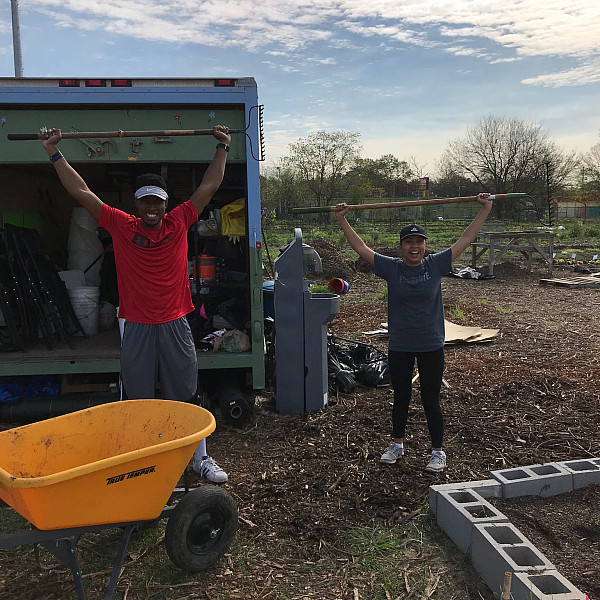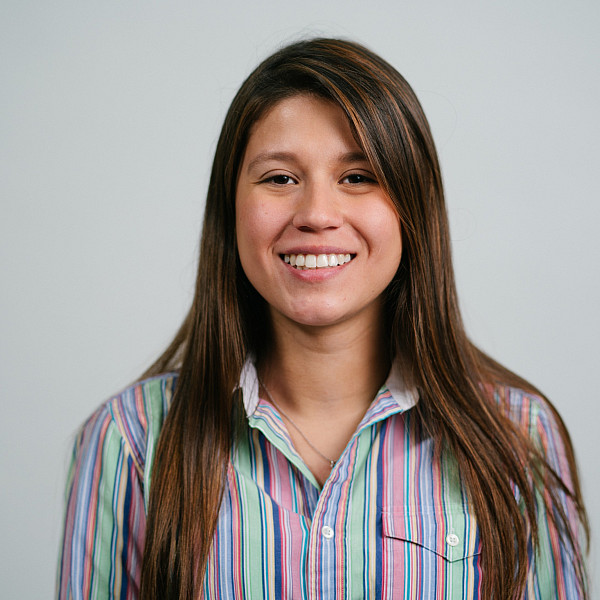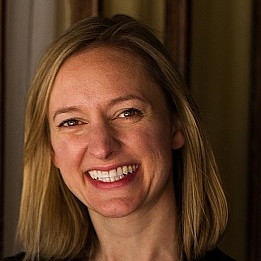News
The Impact of Community-Engaged Learning
May 09, 2019
May 09, 2019
Open gallery

“Service-learning is a form of experiential education in which students engage in activities that address human and community needs together with structured opportunities for reflection designed to achieve desired learning outcomes.” − Barbara Jacoby, Service-Learning in Higher Education, 1996
As a teaching–learning community, Southwestern’s engagement with the Georgetown community typifies this symbiotic relationship through community-engaged learning projects (CELP). This type of community engagement is implemented in various courses across multiple disciplines at Southwestern, and these projects often seek to address a community need through structured service and student action while simultaneously contributing to student learning goals.
Reflecting on Southwestern’s CELP within the Spanish department, students are required to complete eight volunteer hours at a community-partnered school and fill out a journal reflecting on their experience. The University’s goals for students who participate in CELP are multifaceted: “to engage in meaningful interaction with native speakers of Spanish, to foster empathy with language learners in multiple contexts, to create interpersonal connections with Spanish-speaking communities, to increase fluency in Spanish, and to provide mutually beneficial service to the community.”
While visiting their community-partnered classrooms, Southwestern students take on the dual role of mentor and student. For one hour each week, they practice listening to and speaking in Spanish with the elementary-school children in their community-partnered classrooms while also serving as classroom helpers and role models. The structure of the interaction between the students differs based on the classroom’s needs, though most SU students are given free reign of the class and are simply told to use their Spanish.
The most obvious goal of Southwestern’s Spanish CELP is language acquisition. Since the majority of the elementary classrooms involved with the program are predominantly made up of English-as-a-second-language (ESL) students, their goal is higher proficiency in English while Southwestern students’ goal is proficiency in Spanish. Chance Winters ’21, a biology and business double major, recently participated in CELP, recalling that “the program is challenging because confidence in a foreign language was never a thing for me with Spanish.” But the more times he visited his volunteer site, the more his confidence grew. By the end of the project, Winters noted that the experience helped with “growing my vocabulary” and taught him how to “better interact with people who have language barriers, especially in English.”
During her visits to her CELP-partnered classroom, Ashley Jennings ’21, a biochemistry major, aided the children in reading out loud in Spanish. She notes that because of this repeated experience, “I know for a fact my ability to understand different Spanish speakers got immensely better.” Just like Winters at the beginning of the program, Jennings felt similarly uncomfortable communicating in Spanish. But as she grew more comfortable in her visits, she progressively spoke more and more Spanish. And just as her listening skills improved with practice, so, too, did her speaking ability.
The true beauty of Southwestern’s CELP is that it seeks to address a need within the Georgetown community. And while student learning is a priority, it’s the symbiotic nature of CELP that makes it such a unique and rewarding experience. Aside from the obvious purpose of language acquisition, Southwestern students enter into these classrooms with the fundamental goal of being useful and helpful. Given that average class sizes in community-partnered schools near 30, Southwestern students provide much-needed support to teachers by providing another set of eyes and ears to monitor and engage with these young, energetic students. Winters notes that his task was as “a role model for continuing [these kids’] education or [as] someone that can share the difficulty they are experiencing with the language.” Jennings reflects with pride on how the kids in her class “got to see that their language is important to embrace and that their reading levels are positively impacted with practice.”
Ultimately, students leave CELP with a sense of responsibility to their community and a heightened awareness of their role as agents of positive social change. From my own experience in the program, I’ve seen firsthand the impact that Southwestern students have had on these kids—and vice versa. When I look back on my visits, I think about how the children’s faces would light up whenever a new Southwestern student would walk into the room. Take it from me: there is no better feeling than the satisfaction that comes from making a difference in these classrooms.

















